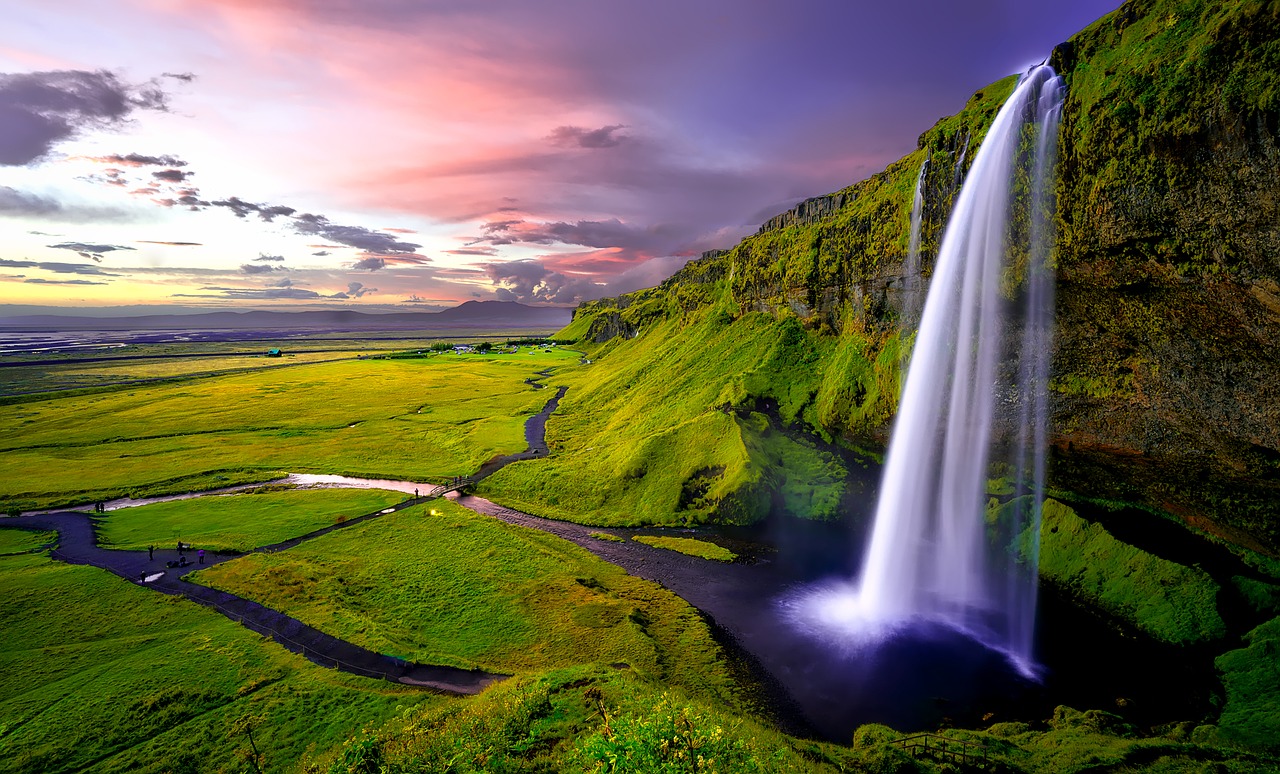
As time progresses, landscapes experience change owing to things like natural disasters, ice ages, and human settlements among many other factors. Humans have altered the landscape of many places across the world to the point that they barely resemble their former selves. New York City, one of the worlds booming metropolis, was once a swamp.
Sometimes these changes are not a good thing. Many parts of the world, especially Africa and the Middle East, are under threat of desertification as they are faced with climate changes, human actions, and other processes. Desertification would reduce the number of habitable areas that we have available for use.
Throughout its history, Iceland had undergone many changes and that has all shaped it into the place we see today. One of those changes was the decline of its forest as people began to settle on the island.
A Brief History Of Iceland
Located in the North Atlantic Ocean, Iceland is a volcanic island that is about the size of Virgina. It is located on the border of two different tectonic plates: the North American plate and the Eurasian plate. This has contributed to its high level of volcanic activity and geothermal vents.
Since it is located so far north, Iceland experiences cold winters and cool summers, with some exceptions. About 10% of the country is covered in glaciers. It is estimated that Iceland is about 25 million years old, based on the age of some of its oldest rocks. It was formed from a volcanic plume that created the island as we know it.
Iceland began to be settled in the 9th century by Irish monks followed by Vikings. In 874 CE, Ingólfur Arnarson led the Vikings to Reykjavík and build the first permanent settlement. Iceland was ruled by the Norwegian and then the Dutch in the centuries that followed. By 1944, Iceland was able to adopt a parliamentary republic regime and declare its independence from Denmark.
Forest Decline And Growth
Based on fossil evidence, it is suggested that Iceland was covered in forests in abundance during the mid to late Tertiary, which was about 5-15 million years ago. There were many different kinds of species that all thrived on the young island. About 2-5 million years ago, during the Pliocene era, the species changed to things like spruce or birch and other boreal-type forests. This was indicative of a cooling climate.
The cooling climate would lead to a glaciation that would mark the start of Iceland’s forest decline. Repeated glaciations events caused many species to die out as they became unable to survive the constant changes. The forests that survived these events were mainly birch species. The other remaining species became rare and only managed to grow as shrubs rather than trees. This all changed when humans came.
By the time the Vikings settled in Iceland, about 25-40% of Iceland was covered in forests made of birch. With their permanent settlements, the Vikings needed resources to continue expanding their homes. Being an agrarian society, they turned their eyes to the forests that covered some of the lands and began clearing the areas to create fields for farms and grazing land for sheeps.
It is sometimes attributed that a cooling climate, from a small ice age, volcanic activity, and other natural disturbances to the land was one of the main cause of the forest decline. However, an analysis showed that these natural disturbances could not account for the 95% decline.
The importance sheep for wool and food as well as the increasing use of other livestock meant that they were more of them grazing the land. It is believed that along with the cutting down of trees, the grazing of livestock contributed to the inability of tree species to regenerate and grow back. The rapid deforestation and subsequent soil erosion, as a direct consequence of the deforestation, places Iceland in the sites of desertification, which would further kill off other green life.
To combat the almost total decimation of Iceland’s forest, organized forestry began in 1899 and those beginnings led to the formation of the Icelandic Forestry Service (IFS) in 1908.
The IFS initially focused on recovering the birch population because it was already native to Iceland rather than try to plant more exotic species. As they gained more experience in planting trees, the IFS moved towards more exotic species in the 1950s. They would begin planting millions of seeds every year.
Despite a small decline in tree planting in the 1960s-1980s, tree planting gain strides again in the 90s when around 4 million trees were being planted annually. From 2007-2009, that went up to around 6 million seeds being planted annually. While the economic crisis in 2008-2009 caused a decline in seed planting, about 3 million annually, the IFS continued its path of recovering the forests of Iceland.
After a 1,000 of years after the Vikings came and started the destruction of the forests, the IFS was able to recover these forests. Today, these forests are flourishing and the last remanents are no longer alone. In a recent remapping of natural woodlands done by the IFS, it was found that birchwoods are expanding their populations for the first time since their decline. They now cover about 1.5% of Iceland. Cultivated forests have also grown and now forest and woodlands cover about 2% of Iceland.
These gains may seem small, but they represent the success of the forest rehabilitation started by the IFS. For hundreds of years, the forests were under threat and in about 120 years, we have managed to turn their decline around. Given more time and funding, it is possible for Iceland to recover its forest fully. It was centuries ago that the people Iceland could never imagine a land with thriving forests. But now, we are seeing the difference and recognizing that it is possible to save the land from human actions.









